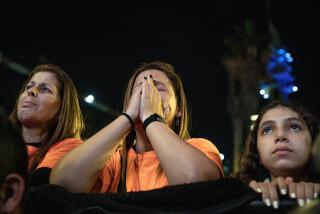‘Lone wolf’ terrorists get what they want in global spotlight
If late bombing suspect Tamerlan Tsarnaev attacked the Boston Marathon with an aim to draw attention to Muslim suffering in Chechnya, his ancestral homeland, he succeeded.
Or if, as alleged by some who knew him, he was angered by U.S. military involvement in Iraq and Afghanistan, those grievances have been widely aired, analyzed and discussed in every facet.
Tsarnaev’s name and that of his younger brother, Dzhokhar, have dominated headlines for more than a week, elevating the young men and whatever political motives they might have had to worldwide notoriety.
Counter-terrorism experts warn that intense media attention to the violent acts of “lone wolf” extremists threatens to encourage emulation. And some fear that the spotlight shined on Internet-based propaganda and bomb-building instruction is making a self-fulfilling prophecy of worries that do-it-yourself terrorism will spread.
“Partly due to the oxygen of publicity given Al Qaeda in the West, Al Qaeda is now a global brand and one that young people in some parts of the world want,” said Ed Husain, a British scholar on Islamic fundamentalism and a fellow with the Council on Foreign Relations. He sees the 24/7 media blasts on the Tsarnaevs as exaggerating the actual threat and, at the same time, advertising to alienated young men a way of drawing world notice to their causes.
Given the abundance of regional conflicts in which Muslims are often victims, “I’m astonished that more of this hasn’t happened,” Husain said of self-radicalized militants copying the organized terror networks’ tactics. He pointed to religious and ethnic strife in Syria, Libya, Myanmar, Palestine, the Philippines and in the Uighur communities in China as potential catalysts for strikes by the aggrieved against the forces oppressing them or against the world’s most powerful nations.
“It is part of the downside of being the world’s superpower, that even when the United States is not involved [in a regional conflict] they are accused of standing by and watching rather than doing something about it,” said Husain.
Dzhokar Tsarnaev has been interrogated by federal agents in the Boston hospital where he is recovering from wounds sustained in the firefight with police that killed his brother. He has reportedly told investigators the two acted alone in the Boston bombings and were headed for New York City’s Times Square to unleash the rest of their homemade explosives when they were intercepted Friday.
That choice of target has enhanced concerns that lone wolves are being inspired by those who have gone before them. Times Square was the venue of a failed attempt to detonate an SUV packed with explosives in May 2010 by Faisal Shahzad, a Pakistani-born naturalized U.S. citizen now serving a life sentence for the attempted bombing. Shahzad’s planned protest of U.S. drone attacks in Afghanistan was cited by two Pakistani-born brothers, arrested late last year, as the idea behind their search for another New York City landmark to bomb.
News reports have alleged that the Tsarnaevs were assisted in their preparations by the online magazine Inspire, a sporadic publication of the Al Qaeda franchise in Yemen. Whether the brothers actually consulted the site or learned anything from it “doesn’t really matter,” Foreign Policy magazine observed in a commentary Tuesday.
“Inspire has become the worst kind of self-fulfilling prophecy, in which our collective worries about terrorism magnified our enemies’ reach,” said writer J.M. Berger, blaming excessive media coverage for giving the terrorists’ how-to manual more credit than it deserves.
Just four days before the marathon bombings, the U.S. director of national intelligence, James R. Clapper, warned in an address to the House Intelligence Committee that terrorist attacks have morphed from foreign-orchestrated operations by the likes of Al Qaeda into one-off, amateur actions that can nevertheless be deadly.
“The threat from Al Qaeda and the potential for a massive coordinated attack on the United States may be diminished, but the jihadist movement is more diffuse,” Clapper said. “Lone wolves, domestic extremists and jihad-inspired affiliated groups are still determined to attack Western interests.”
Dmitri V. Trenin, a counter-terrorism expert who directs the Carnegie Moscow Center, also sees the self-directed extremists as today’s more daunting threat and the attention they garner as incentive for other radicals to propel their grievances into the public spotlight.
“It’s a serious problem in today’s world that it is relatively easy to become self-radicalized because of the availability of all this propaganda on the Internet. You can pursue your radical interests without leaving your living room,” said Trenin.
While the lone wolf is hard to identify and deter ahead of his violent statement, the numbers of angry religious zealots among the estimated 10 million Muslims in the United States is minute in comparison with the vast majority who integrate well and embrace American values, Trenin said.
“As a Russian I feel in your society there’s so much more interaction between law enforcement and the citizenry. You have more trust in those who protect society than in a country like Russia,” he said.
“Most immigrants want to fit into the society that has accepted them, and most succeed,” said Trenin. “The problem is that in such a big country as the United States, even a tiny percentage who choose to turn against that society can represent a large number.”
ALSO:
Gunmen overtake town as clashes continue in Iraq
U.S. lawmakers call for action on Syria’s chemical weapons
Putin calls for closer cooperation between U.S., Russia on terrorism
A foreign correspondent for 25 years, Carol J. Williams traveled to and reported from more than 80 countries in Europe, Asia, the Middle East and Latin America.
More to Read
Start your day right
Sign up for Essential California for news, features and recommendations from the L.A. Times and beyond in your inbox six days a week.
You may occasionally receive promotional content from the Los Angeles Times.







